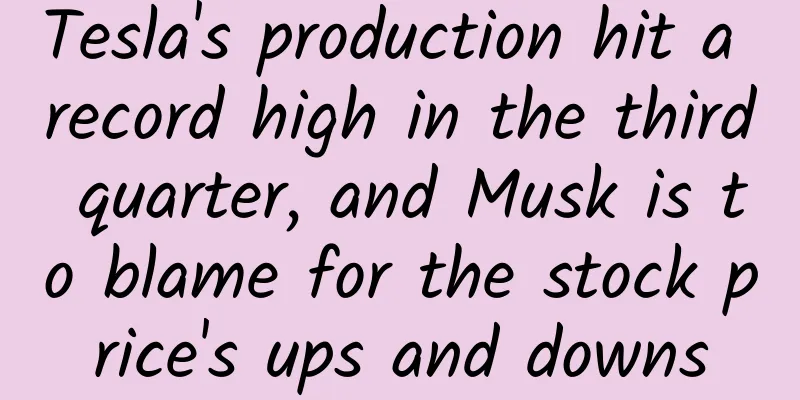What if there is a black hole at the center of the sun? Astronomers are really studying it!

|
First of all, let me make it clear that this is not a crazy idea, nor is it a scene from a science fiction movie, but a problem that astronomers are seriously studying. The origin of this problem dates back a long, long time ago. 01Primordial black hole : the product of the universe's " chaos " 13.7 billion years ago, when the Big Bang began, the initial density fluctuations were not uniform, especially on some small scales, where there may be very dense and hot areas, far higher than the average value of the large scale of the universe. These high-density areas may collapse into black holes due to gravity in the very early universe (10 to the negative 24th power to 10 to the negative 14th power seconds after the Big Bang ). This type of black hole is called a primordial black hole (see Figure 1). The mass of a primordial black hole ranges widely, from 10 to the negative 5th power grams to 10 to the 38th power grams (100,000 times the mass of the sun) , depending on the time of the birth of the primordial black hole . The earlier it is born , the smaller the mass . The study of primordial black holes is still at a theoretical level. We have not yet actually detected them in the universe, but there is some observational evidence suggesting that primordial black holes may exist, and their existence can solve many problems faced by astronomers : (1) Dark matter : Many people believe that the primordial black holes that are ubiquitous in the universe may be dark matter, or at least contribute a portion of it; (2) Gravitational waves have detected a large number of binary black hole merger events , some of which are difficult to explain by stellar collapse. They may be primordial black holes. (3) Supermassive black holes were discovered in the early universe . For example, the James Webb Telescope recently discovered a supermassive black hole with a mass of 40 million times that of the sun. It was only 500 million years old after the Big Bang. At that time, the first generation of stars were born not long ago. Even if they collapsed into black holes, they did not have enough time to merge into such a supermassive black hole. It is possible that the massive primordial black holes are the seeds that can merge into supermassive black holes in such a short time. Figure 1: The evolution of the universe from the Big Bang to today. Theory predicts that black holes would be formed at the beginning of the Big Bang, and this type of black hole is called a primordial black hole. (Image modified by the author from https://www.esa.int/ESA_Multimedia/Images/2021/12/Did_black_holes_form_immediately_after_the_Big_Bang) 02 Hawking Star: A star with a black hole "parasitizing" its center In the 1970s, Hawking and his colleague Kyle conducted a lot of research on primordial black holes. Among them, when Hawking was studying the quantum effects of primordial black holes, he proposed that black holes would produce radiation, which was later called Hawking radiation. Primordial black holes with a mass less than 10 to the 15th power of grams (roughly equivalent to an asteroid with a diameter of 1 km) will slowly evaporate due to Hawking radiation and will not "survive" to this day. Hawking even proposed an idea that if the universe is full of extremely small black holes, stars like the sun may absorb a lot of them and eventually merge into a small black hole with a mass of about 10 to the 17th power of grams at the center of the sun . This is the first time that it has been proposed that a black hole may be parasitic at the center of a star. In order to commemorate Hawking's original conjecture , some people suggested calling this celestial body a " Hawking Star ." But when people think of a black hole, they think of it as a gluttonous beast that will tear everything in the universe apart and devour it. If there is a black hole at the center of a star, people will think that it will be tortured to pieces by the black hole and will no longer look like a normal star. But the center of Hawking's star is a mini black hole, which is negligible compared to the mass of the sun ( 10 to the 33rd power of grams ) and will not bring catastrophic consequences to the star; even in the long life of the star, it is difficult to detect the existence of this mini black hole. 03If the sun is a Hawking star If the current Sun was a Hawking Star, would it be any different? Obviously, the internal structure would be different from that of a normal star. The most significant thing is that it would increase the convection in the central region, making a larger convection zone inside the Sun, stirring the different layers of matter (think of boiling water), but it would have almost no effect on the surface of the Sun. The light produced by black hole accretion is much smaller than the light emitted by solar nuclear fusion, and we cannot observe any changes in the brightness of the Sun at all. The existence of a black hole will also change the rate of solar nuclear fusion, but the change is also very, very small. At our current level of observation (including solar seismic and neutrino observations), we cannot distinguish between a normal Sun and a Sun containing a mini black hole (with a mass less than 10 to the 26th power of grams, roughly equivalent to the moon). If the sun was born as a Hawking star, would it evolve like a normal star? Astronomers can use numerical simulations to try to answer such questions. As the black hole accretes the sun's matter, it will gradually grow, and the luminosity produced by the accretion will become higher and higher. When the mass of the black hole grows to 10 to the 29th power of grams (roughly equivalent to Neptune), the luminosity of the black hole's accretion exceeds the luminosity of nuclear fusion, and the sun begins to expand, and the entire sun will become a convection zone. In addition, the core region of Hawking's star will also expand, thereby reducing its density and even failing to trigger nuclear fusion. At this time, the energy of the entire sun is dominated by the accretion of the black hole. At this time, the sun has left the main sequence, which is called the post-main sequence. At this time, the sun is cooler and redder than a normal red giant. The sun will be in the post-main sequence for the next hundreds of millions to billions of years and will be slowly consumed by the black hole. We all know that the sun will expand rapidly in its later years, becoming a red giant in a few hundred million years, and even swallowing up the earth. However , the expansion of Hawkings in the post-main sequence is very small, at most expanding to four or five times the diameter of the sun today. The earth will obviously not be swallowed by Hawkings in the post-main sequence, but it will still be scorched, and the temperature of the earth may be as high as 250 degrees Celsius . If the initial mass of the black hole is 10 to the 21st power grams (roughly equivalent to an asteroid with a diameter of 100 kilometers), then the Sun will evolve exactly like a normal star for more than 10 billion years. It is only in the last few hundred million years, when the mass of the black hole exceeds 10 to the 29th power grams, that it enters the post-main sequence, which is significantly different from the normal red giant stage. However, if the initial mass of the black hole increases tenfold (10 to the 22nd power grams), the Sun will enter the post-main sequence in 7 billion years. If it increases another 10 times (10 to the 23rd power grams), the Sun will enter the post-main sequence in 2.5 billion years. We do not know how Hawking's star will evolve after the post-main sequence, and astronomers need to conduct further research. 04How to find Hawking's star According to astronomers’ estimates, the probability of the sun capturing a mini primordial black hole is very low. If mini primordial black holes are common, there is still a high probability that Hawking stars exist among the hundreds of billions of stars in the Milky Way. So how can we discover them? Figure 2 The Milky Way is full of stars. (Image from ESA) Although their appearance and brightness look similar to those of ordinary stars, due to more intense internal convection, especially in the post-main sequence period, the entire star is completely convective, which will bring the helium in the center to the surface. Therefore, the helium abundance on its surface is much higher than that of ordinary stars. However, the temperature of Hawking Stars with the mass of the sun is relatively low, and the helium spectral lines are very weak, making it difficult to obtain the helium abundance through spectral measurements. However, asteroseismic measurements can be used to obtain the internal structure and oscillation mode of stars . Due to complete convection, the oscillation mode of Hawking's star is different from that of ordinary stars, so asteroseismic research is an important means to identify Hawking's star. The Gaia satellite has observed 1 billion stars in the Milky Way, and the data released in the future can also be used to study asteroseismic data. The Kepler and TESS satellites, as well as the future PLATO and Roman satellites, can all provide data for asteroseismic research. Perhaps their asteroseismic data results contain evidence of the existence of Hawking's star, which is waiting for astronomers to search for. Let us wait and see! References: https://arxiv.org/pdf/2312.07647.pdf https://arxiv.org/abs/2312.06782 https://ui.adsabs.harvard.edu/abs/1971MNRAS.152...75H/abstract https://iopscience.iop.org/article/10.3847/2041-8213/ad0e76 Author: Yan Zhen, researcher at Shanghai Astronomical Observatory, Chinese Academy of Sciences Produced by: Science Popularization China Produced by: China Science and Technology Press Co., Ltd., China Science and Technology Publishing House (Beijing) Digital Media Co., Ltd. |
>>: It’s called a ship, but where are the wheels of the ship?
Recommend
Promotional event: the process of bargaining for popular products!
As early as 2016, price-cutting reached a small c...
Is sleepwalking a dream? Why do we sleepwalk while we are asleep?
When it comes to sleepwalking, you might think of...
As a Winboy, I am still confused about WP compatibility with Android apps
[[130936]] First of all, it should be pointed out...
iPhone 6 cross-border brutal blow: kill 20nm graphics card
In the past, AMD (ATI) and NVIDIA were always the...
Tips for making popular “short video” ads!
There are three main elements in Internet adverti...
6 core skills for operating Toutiao accounts!
There is a surprising set of data. In 2018, the p...
"Wuwei Investment Course" Fu Gang established a stable and profitable trading system
"Wuwei Investment Course" Fu Gang estab...
The mysterious witch fire and Mazu fire witnessed by the ancients...What exactly is ball lightning?
This French illustration shows ball lightning ent...
What is the difference between UCloud and other hybrid cloud companies?
A domestic IT media once held a small debate on t...
How to maximize the effectiveness of overseas KOL promotion and marketing?
Internet celebrity marketing is different from ot...
A bowl of Yulin rice noodles contains the mountains and rivers of Lingnan
Written by Wei Shuihua Header image | TuChong Cre...
How much does it cost for Dehong to join a lottery app?
What is the price for joining the Dehong Lottery ...
A must-read for women! How terrible is “corpus luteum rupture”?
The following incident happened at the Asian Game...
How about Lanzhou WeChat Mini Program Development Company? Which one is better?
In recent years, with the launch of "Mini Pr...









